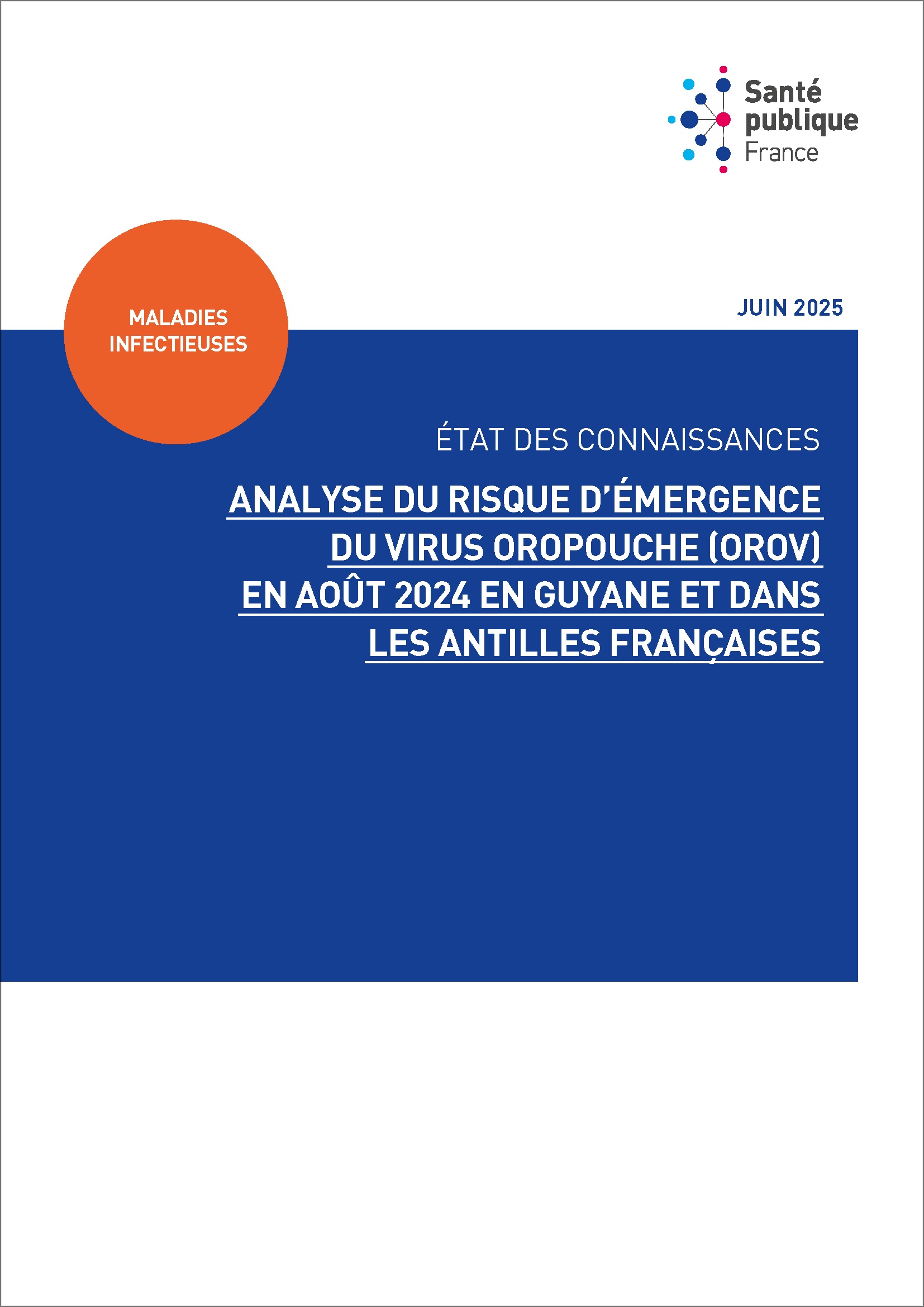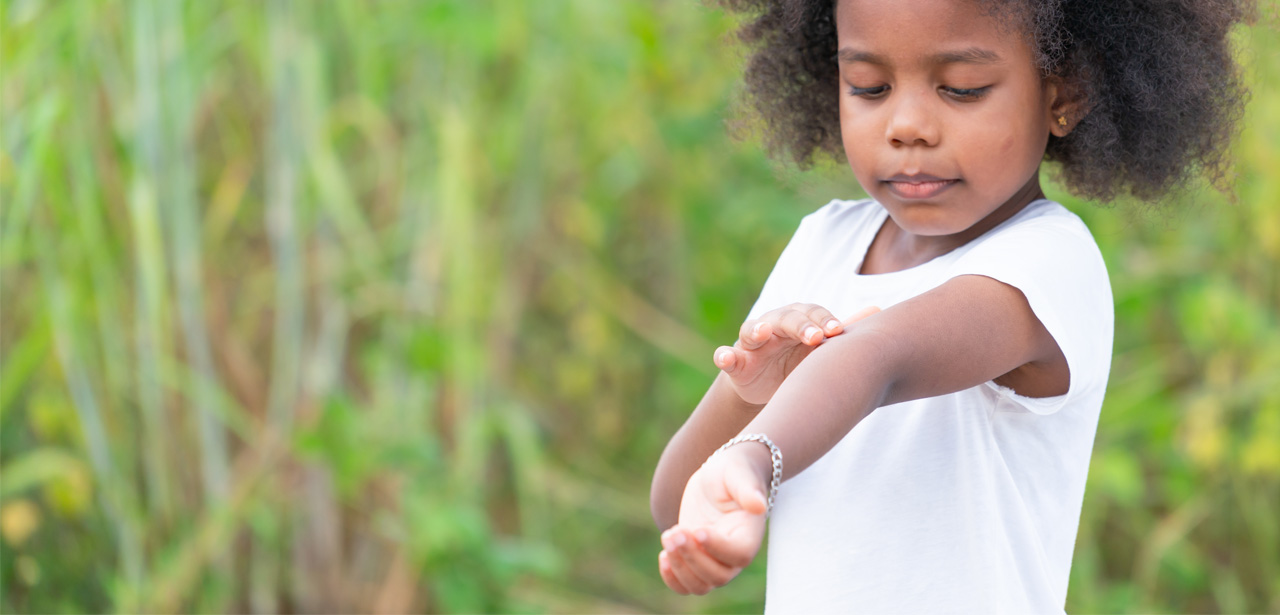Translation Google
"Oropouche", this new virus that worries health authorities in the Antilles-Guyana
A worrying analysis of the risk of this disease emerging in French Guiana and the French Antilles has just been published by Santé publique France. The document covers data from August 2024, which needs to be updated. However, this report already indicates an epidemic risk in the Atlantic region.
Franck Aristide • Published on June 17, 2025 at 12:00 p.m.
Fever, chills, severe headaches, muscle and joint pain, nausea, vomiting, and a rash are the symptoms caused by this new "Oropouche" virus. These signs are similar to those of arboviruses in general.
Epidemic risk
In 2023 and 2024, an explosion in the number of cases was observed in South America and the Caribbean, with deaths and fetal malformations among infected mothers. According to Public Health France, today, the risk of an epidemic appears to be high for Guadeloupe, Martinique, and French Guiana.
The vectors are midges that usually infect ruminants, but with the wind, they can disperse over long distances over bodies of water and introduce the virus into uninfected areas. This mode of dissemination could facilitate the emergence of human infection in the French Antilles and Guiana.
No vaccine or treatment currently available
The report therefore highlights the need to prepare for a possible epidemic. Among the measures to be implemented in the short term, it recommends increasing diagnostic capacity, surveillance, alerts, individual and collective protection against vectors, as well as biological and entomological epidemiological investigations.
These are currently the only methods of control, as there is no vaccine or treatment for the " Oropouche " virus disease.
-------------------------------------------------------------------------
Analysis of the risk of emergence of the OROPOUCHE virus (OROV) in August 2024 in French Guiana and the French Antilles
Published on June 12, 2025
Updated on June 11, 2025

This report presents an initial analysis carried out in August 2024 and consolidated in December 2024, in terms of bibliography and monitoring of the evolution of the risk in Latin America. According to the state of knowledge at the time of its writing, infection by the Oropouche virus (OROV) is one of the most important causes of arbovirosis in South America after dengue fever, with 2 to 5 million people directly exposed. This importance contrasts with the fragmented or imprecise knowledge on the transmission cycle, vectors, animal hosts and reservoirs, clinical aspects, asymptomatic forms and epidemiology of OROV infection. OROV is a segmented virus belonging to the Orthobunyaviruses, with significant potential for evolvability/emergence based in particular on its capacity for reassortment. The epidemic explosion and spread observed in 2023-2024 (including the Caribbean) are linked to a reassortant virus with, for the first time, the reporting of deaths and maternal-fetal forms with malformations, as well as a possible risk of sexual transmission. The virus has extended its area of circulation under the influence of environmental and biodiversity alteration, demographic changes, and human mobility. The main known vector and potential vectors have a much wider distribution than the current outbreaks, particularly in French Guiana and Martinique. The risk of importation through travel and dissemination in the French Communities of America (CFAs) was estimated to be high in August and December 2024. Culicoides, midges that transmit Orbivirus and Orthobunyavirus to domestic and wild ruminants (Bluetongue [BTV], Epidemic Hemorrhagic Disease (EHD), Schmallenberg Virus Disease [SBV]) can disperse with the winds over very long distances over water bodies and therefore be responsible for the introduction of viruses into uninfected territories. This mode of dissemination should be studied for C. paraensis in the context of OROV transmission. The risk of emergence of human OROV infection in the CFAS could be assessed in this report for all CFAS except Saint Martin and Saint Barthélémy due to a lack of data. The report concludes that there is a high risk of an epidemic in French Guiana, Martinique, and Guadeloupe, with uncertainty in this analysis being high in French Guiana and Martinique and low in Martinique. The significant increase in risk for CFAs in 2024 underscores the need for preparedness, involving management measures. Among these, short-term measures include diagnostic capacity, surveillance and alerts, individual and collective protection against vectors, as well as epidemiological and entomological investigations.The risk level estimated in August 2024 will need to be updated for CFAs in the coming months depending on the evolution of the epidemic in South America and the Caribbean. There is no specific treatment or vaccine against Oropouche virus disease, and treatment is symptomatic.
Author: Desenclos Jean-Claude, Paty Marie-Claire, De Valk Henriette
Year of publication: 2025
Pages: 61 p.
Collection: State of knowledge PDF 1.27 MB
"Oropouche", this new virus that worries health authorities in the Antilles-Guyana
A worrying analysis of the risk of this disease emerging in French Guiana and the French Antilles has just been published by Santé publique France. The document covers data from August 2024, which needs to be updated. However, this report already indicates an epidemic risk in the Atlantic region.
Franck Aristide • Published on June 17, 2025 at 12:00 p.m.
Fever, chills, severe headaches, muscle and joint pain, nausea, vomiting, and a rash are the symptoms caused by this new "Oropouche" virus. These signs are similar to those of arboviruses in general.
Epidemic risk
In 2023 and 2024, an explosion in the number of cases was observed in South America and the Caribbean, with deaths and fetal malformations among infected mothers. According to Public Health France, today, the risk of an epidemic appears to be high for Guadeloupe, Martinique, and French Guiana.
The vectors are midges that usually infect ruminants, but with the wind, they can disperse over long distances over bodies of water and introduce the virus into uninfected areas. This mode of dissemination could facilitate the emergence of human infection in the French Antilles and Guiana.
No vaccine or treatment currently available
The report therefore highlights the need to prepare for a possible epidemic. Among the measures to be implemented in the short term, it recommends increasing diagnostic capacity, surveillance, alerts, individual and collective protection against vectors, as well as biological and entomological epidemiological investigations.
These are currently the only methods of control, as there is no vaccine or treatment for the " Oropouche " virus disease.
-------------------------------------------------------------------------
Analysis of the risk of emergence of the OROPOUCHE virus (OROV) in August 2024 in French Guiana and the French Antilles
Published on June 12, 2025
Updated on June 11, 2025

This report presents an initial analysis carried out in August 2024 and consolidated in December 2024, in terms of bibliography and monitoring of the evolution of the risk in Latin America. According to the state of knowledge at the time of its writing, infection by the Oropouche virus (OROV) is one of the most important causes of arbovirosis in South America after dengue fever, with 2 to 5 million people directly exposed. This importance contrasts with the fragmented or imprecise knowledge on the transmission cycle, vectors, animal hosts and reservoirs, clinical aspects, asymptomatic forms and epidemiology of OROV infection. OROV is a segmented virus belonging to the Orthobunyaviruses, with significant potential for evolvability/emergence based in particular on its capacity for reassortment. The epidemic explosion and spread observed in 2023-2024 (including the Caribbean) are linked to a reassortant virus with, for the first time, the reporting of deaths and maternal-fetal forms with malformations, as well as a possible risk of sexual transmission. The virus has extended its area of circulation under the influence of environmental and biodiversity alteration, demographic changes, and human mobility. The main known vector and potential vectors have a much wider distribution than the current outbreaks, particularly in French Guiana and Martinique. The risk of importation through travel and dissemination in the French Communities of America (CFAs) was estimated to be high in August and December 2024. Culicoides, midges that transmit Orbivirus and Orthobunyavirus to domestic and wild ruminants (Bluetongue [BTV], Epidemic Hemorrhagic Disease (EHD), Schmallenberg Virus Disease [SBV]) can disperse with the winds over very long distances over water bodies and therefore be responsible for the introduction of viruses into uninfected territories. This mode of dissemination should be studied for C. paraensis in the context of OROV transmission. The risk of emergence of human OROV infection in the CFAS could be assessed in this report for all CFAS except Saint Martin and Saint Barthélémy due to a lack of data. The report concludes that there is a high risk of an epidemic in French Guiana, Martinique, and Guadeloupe, with uncertainty in this analysis being high in French Guiana and Martinique and low in Martinique. The significant increase in risk for CFAs in 2024 underscores the need for preparedness, involving management measures. Among these, short-term measures include diagnostic capacity, surveillance and alerts, individual and collective protection against vectors, as well as epidemiological and entomological investigations.The risk level estimated in August 2024 will need to be updated for CFAs in the coming months depending on the evolution of the epidemic in South America and the Caribbean. There is no specific treatment or vaccine against Oropouche virus disease, and treatment is symptomatic.
Author: Desenclos Jean-Claude, Paty Marie-Claire, De Valk Henriette
Year of publication: 2025
Pages: 61 p.
Collection: State of knowledge PDF 1.27 MB


Comment